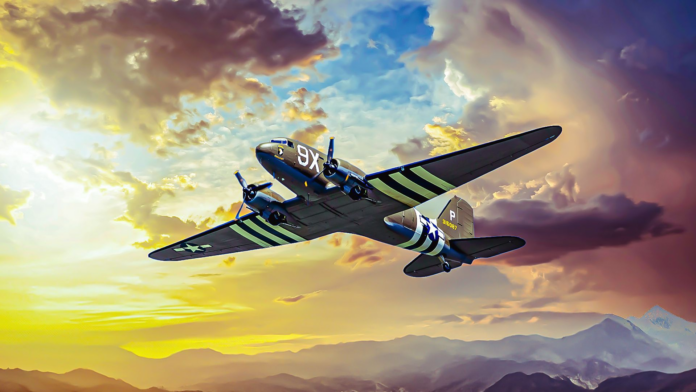After World War II, a wave of technological advancements, economic prosperity, and a newfound sense of global connectivity transformed the aviation landscape. While commercial and military aviation made significant strides during the war years, another industry was about to take flight: private aviation. For the first time, businesses and affluent individuals saw air travel not just as a necessity or a luxury but as a practical tool that could save time, expand business opportunities, and extend personal freedom.
This era marked the beginning of business aviation as we know it today, with a range of aircraft emerging to cater to the demands of executives, celebrities, and corporations. Here are some of the pioneering business aircraft that rose to prominence during this transformative period.
The Beechcraft Model 18: a pioneer in business travel
One of the earliest aircraft to be widely adopted by businesses was the Beechcraft Model 18. Originally introduced in 1937, this twin-engine aircraft found new life in the post-war years. With military contracts dwindling, Beechcraft successfully repurposed the Model 18 for civilian markets, capitalizing on its versatility and proven reliability.
The Model 18 could carry up to eight passengers, offering unprecedented convenience for executives who needed to travel long distances quickly. Its twin-engine design also provided a safety edge, as it could continue to fly on a single engine in the event of a failure. Additionally, its rugged construction and relatively simple maintenance made it an appealing option for small businesses and private owners, helping establish it as a mainstay in business aviation. The Model 18’s performance, combined with its spacious cabin, set a standard for future business aircraft, contributing to the growth of corporate aviation in the years following World War II.
The Douglas DC-3: the Grandfather of private aviation
The Douglas DC-3 was another aircraft with military roots that transitioned into the private sector. Developed in the 1930s as a commercial airliner, it was later used extensively as a transport aircraft during World War II. When the war ended, a surplus of DC-3s hit the market, and they became affordable options for companies seeking large, long-range business aircraft.
The DC-3 could accommodate up to 32 passengers, making it suitable for businesses with larger teams or those transporting clients. Many of these aircraft were converted into luxury transports, outfitted with plush interiors and amenities suited to high-profile clients. Despite its age, the DC-3’s robust design and range of approximately 1,500 miles made it an attractive option for corporate use well into the 1950s and even beyond.
Its durability and dependability earned it a reputation as one of the most successful aircraft ever built, and it became a popular choice among charter operators and small businesses looking for a reliable way to travel long distances. The DC-3’s legacy continues to influence modern aviation, with some still flying today as historical aircraft or converted into cargo planes.
The Lockheed Constellation: the luxury liner of the skies
For those seeking the pinnacle of luxury, the Lockheed Constellation—or “Connie,” as it was affectionately called—was the aircraft of choice. Originally designed for commercial airlines, the aircraft became a favorite among corporations and wealthy individuals due to its impressive range, speed, and sophisticated design. The “triple-tail” design was iconic, and its pressurized cabin allowed for high-altitude flights, a novel feature at the time that provided a smoother, quieter experience.
Many of the 1940s and early 1950s-era Constellations were converted into private aircraft for high-profile clients, including Howard Hughes, who owned multiple models. With a range of up to 4,000 miles, it was one of the few aircraft of its time that could handle long, non-stop routes, making it a favorite for transcontinental business travel.
Related 8 Aircraft That De Havilland Produced An iconic series of rugged, capable aircraft produced by De Havilland Canada.
The De Havilland Dove: a small aircraft with big potential
British aerospace company De Havilland entered the private aviation market after the war with the De Havilland Dove. Launched in 1946, the Dove was a small twin-engine aircraft designed specifically for business and executive travel, seating up to eight passengers. The Dove’s compact size made it ideal for short-haul flights, and its efficient design won it popularity in both Europe and North America.
One of the Dove’s unique features was its low wing design, which allowed it to operate from shorter runways—a valuable feature for reaching smaller airports and remote locations. In the post-war years, the Dove quickly gained a reputation as an affordable yet capable business aircraft, with many still in service decades later.
The Cessna 310: the birth of the modern business aircraft
While many post-war business aircraft were adapted from military or commercial models, the 1950s saw the introduction of aircraft designed specifically for the business market. The Cessna 310, introduced in 1954, was one of the first aircraft built with the business traveler in mind.
This twin-engine aircraft was designed for performance, comfort, and convenience, offering a significant step forward in the evolution of private aviation. The Cessna 310 was capable of seating six to eight passengers, with a range of approximately 1,000 miles. Its sleek design, spacious cabin, and advanced avionics made it an attractive option for companies looking for a fast and efficient way to travel. Interested in finding out more about private aviation? Find more articles like this here.
The impact on private air travel today
These pioneering aircraft not only provided a foundation for business aviation but also shaped its direction in terms of speed, efficiency, and luxury. As technology evolved, so did the capabilities and expectations for business aircraft. Today’s corporate jets, such as the Gulfstream G700 or Bombardier Global 7500, are direct descendants of these post-war aircraft, delivering greater comfort, range, and speed than their mid-20th-century counterparts.



